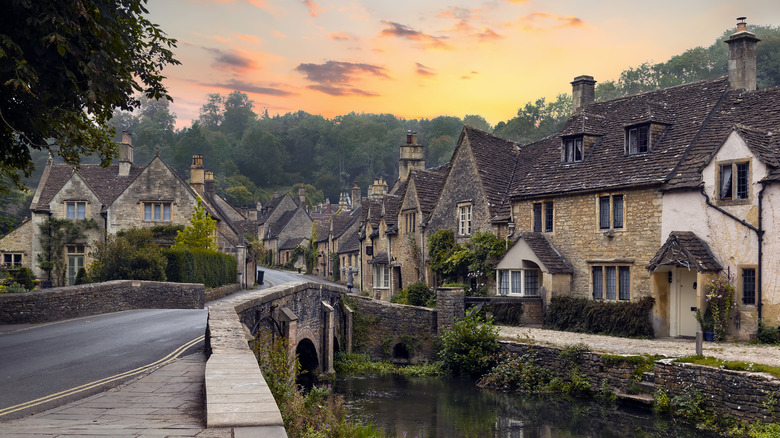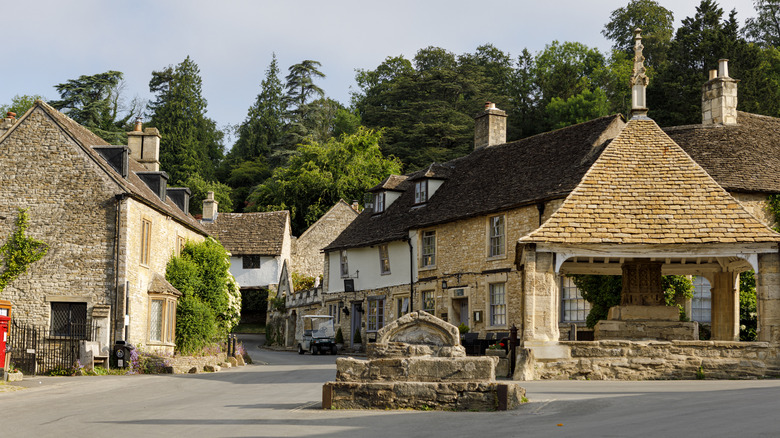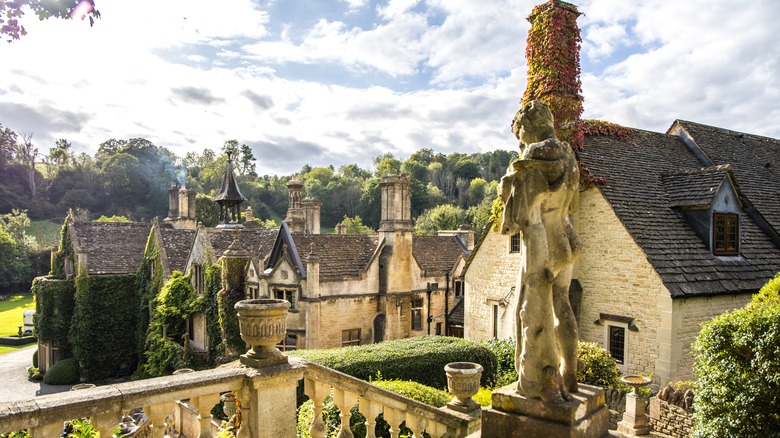This Town Is Widely Known As The Prettiest In All Of England And It's A Total Must-Visit
Once you leave the city and into the countryside, a road trip around England continually delights with its picturesque towns and villages. Quaint hamlets with sleepy cottages, rural market towns, and atmospheric fishing harbors along the U.K.'s coast all modestly compete for the title of the prettiest. Picking a favorite is tough, but if you only have time to chalk off one during your visit, Castle Combe is often cited as the loveliest in the land.
The location is half the battle, and the incredibly Instagramable village gets bonus points for being fortunate enough to reside in one of the U.K.'s most cherished landscapes, the protected Cotswolds Area of Outstanding Natural Beauty. Castle Combe's photogenic reputation has made it a natural for the screen, hosting big Hollywood productions like Steven Spielberg's "War Horse" and the hit British TV series "Downton Abbey." Not that the locals are always happy about the exposure — explorer Sir Ranulph Fiennes once narrowly avoided jail time for plotting to help a friend from the village blow up a dam built for 1967's "Doctor Dolittle."
Located in the leafy county of Wiltshire and around a two-hour drive from The Big Smoke, Castle Combe is well-situated for a day trip if you're staying in London. Or, if you want to soak up the atmosphere a little longer and explore the surrounding area, plenty of cozy cottages and guest houses will make you feel right at home.
What makes Castle Combe so special?
Apart from a few street signs and other incongruously modern-day features, you'd be almost forgiven for thinking time stopped in Castle Combe around the 16th century. A settlement here dates back to 1086 when it was recorded in the Domesday Book as land belonging to Humphrey de l'Isle — the 33 houses comprised of five villagers, seven smallholders, five cottagers, 13 slaves, and three burgesses. Back then, it was called just plain old Combe until Reginald de Dunstanville built a stronghold on the hill overlooking the village in the 12th century. The castle is no longer there but lives on in the name we know today.
In the 14th and 15th centuries,Castle Combe prospered as a marketplace and mill town, resulting in the construction of the handsome stone buildings that survive so gloriously today. Its boom time came to an end, however, when the level of the Bybrook River dropped, and the mills could no longer function. That was effectively when the village became frozen in time, as no new buildings have been constructed ever since. Now, the village is carefully preserved to maintain its ancient charm. Parking, for example, is strictly managed, and there are no overhead cables or satellite dishes in sight, helping to complete the illusion that you are taking a step back through the centuries as you stroll its famous streets.
Things do to in Castle Combe
For a small village of around 350 people, there are quite a few things to see and do in Castle Combe. The first activity on many people's lists is simply to wander through the streets, taking in the glorious old houses and visiting the medieval Market Cross that has been a focal point since the 14th century. Nearby is the Grade I listed St. Andrew's Church, where you will find one of the oldest working clocks in Britain and the final resting place of Sir Walter de Dunstanville, the local baron who fought in two crusades. Film buffs will no doubt want to grab a photo of the beautiful four-gabled Dower House, which stood in for Doctor Dolittle's digs in the original Hollywood movie.
Castle Combe is used to visitors and there are several great places to stop for a bite to eat or a drink. For a classic English Afternoon Tea, book ahead at The Old Rectory Pop-up Tearoom or grab some lunch and a pint at one of the pubs on the market square. The Castle Inn has been welcoming hungry and thirsty visitors since the 12th century while The White Hart is relatively modern — it opened its doors in the 16th century. Both have cozy rooms on offer and serve quality pub grub. If you really want to treat yourself, check your bank balance before reserving a table at The Manor House, a luxury five-star hotel with a Michelin-starred restaurant.


